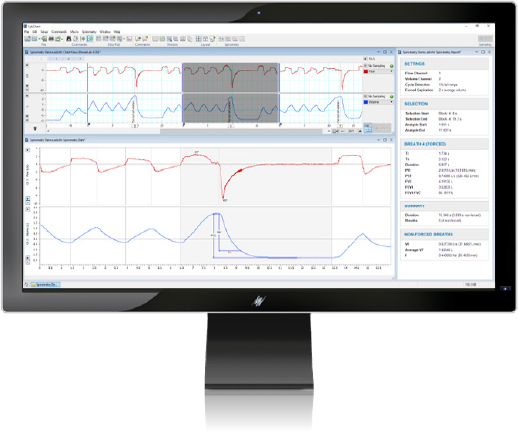
- #COMPUTER GRAPHING SOFTWARE FREE PLUS#
- #COMPUTER GRAPHING SOFTWARE FREE FREE#
Tukey, Newman-Keuls, Dunnett, Bonferroni, Holm-Sidak, or Fisher’s LSD multiple comparisons testing main and simple effects.
Two-way ANOVA, with repeated measures in one or both factors. Two-way ANOVA, even with missing values with some post tests. Calculate the relative risk and odds ratio with confidence intervals.  Fisher's exact test or the chi-square test. Kruskal-Wallis or Friedman nonparametric one-way ANOVA with Dunn's post test. When this is chosen, multiple comparison tests also do not assume sphericity. Greenhouse-Geisser correction so repeated measures one-, two-, and three-way ANOVA do not have to assume sphericity. Many multiple comparisons test are accompanied by confidence intervals and multiplicity adjusted P values. One-way ANOVA without assuming populations with equal standard deviations using Brown-Forsythe and Welch ANOVA, followed by appropriate comparisons tests (Games-Howell, Tamhane T2, Dunnett T3). Ordinary or repeated measures ANOVA followed by the Tukey, Newman-Keuls, Dunnett, Bonferroni or Holm-Sidak multiple comparison tests, the post-test for trend, or Fisher’s Least Significant tests. Perform many t tests at once, using False Discovery Rate (or Bonferroni multiple comparisons) to choose which comparisons are discoveries to study further. Wilcoxon test with confidence interval of median. Kolmogorov-Smirnov test to compare two groups. Nonparametric Mann-Whitney test, including confidence interval of difference of medians. Automatically generate volcano plot (difference vs. Reports P values and confidence intervals. If I say plot range all, then you can see that we have these points where we get these incredibly large values and then everything else is basically the same in comparison. And here we can see that we have these blank areas basically because we're getting to such large values that Mathematica is saying, I can't really do anything about that. Alternatively, I suppose we are asked as well to find some contour lines so we can call up the contour plot functionality and keep the same input. Alternatively, we can use the contour plot function or not. Let me read under this uh default view, we have some sort of very, very dramatic spike happening there corresponding to when we would have division by zero. So we can see that Yes, we have some sort of very dramatic.
Fisher's exact test or the chi-square test. Kruskal-Wallis or Friedman nonparametric one-way ANOVA with Dunn's post test. When this is chosen, multiple comparison tests also do not assume sphericity. Greenhouse-Geisser correction so repeated measures one-, two-, and three-way ANOVA do not have to assume sphericity. Many multiple comparisons test are accompanied by confidence intervals and multiplicity adjusted P values. One-way ANOVA without assuming populations with equal standard deviations using Brown-Forsythe and Welch ANOVA, followed by appropriate comparisons tests (Games-Howell, Tamhane T2, Dunnett T3). Ordinary or repeated measures ANOVA followed by the Tukey, Newman-Keuls, Dunnett, Bonferroni or Holm-Sidak multiple comparison tests, the post-test for trend, or Fisher’s Least Significant tests. Perform many t tests at once, using False Discovery Rate (or Bonferroni multiple comparisons) to choose which comparisons are discoveries to study further. Wilcoxon test with confidence interval of median. Kolmogorov-Smirnov test to compare two groups. Nonparametric Mann-Whitney test, including confidence interval of difference of medians. Automatically generate volcano plot (difference vs. Reports P values and confidence intervals. If I say plot range all, then you can see that we have these points where we get these incredibly large values and then everything else is basically the same in comparison. And here we can see that we have these blank areas basically because we're getting to such large values that Mathematica is saying, I can't really do anything about that. Alternatively, I suppose we are asked as well to find some contour lines so we can call up the contour plot functionality and keep the same input. Alternatively, we can use the contour plot function or not. Let me read under this uh default view, we have some sort of very, very dramatic spike happening there corresponding to when we would have division by zero. So we can see that Yes, we have some sort of very dramatic. 
Let's expand out the domain and could even call up slot range and let's say all. Okay, so can see we definitely look like we're having some sort of explosion going on here. So X between negative one and one and let's say why between negative one and one. Have our function and then specify the boundaries or the domain that we want to plot in.

Now, one thing that we can do if you have access to Wolfram Mathematica is to plot this with more control. And that is reflected in the contour plot here.
#COMPUTER GRAPHING SOFTWARE FREE PLUS#
All right, so we can see that it looks like we have some sort of singularity happening around uh when y equals zero into X plus or minus one as we would expect.
#COMPUTER GRAPHING SOFTWARE FREE FREE#
Now, one way to do this would be to call or to go to the Wolfram Alpha website and one of the free functions that you'd be able to do is just type in the function or free functionality that you would have access to would be to type in the function as I am doing so here and within Wolfram Mathematica here, I'm going to be getting the output that the Wolfram Alpha website would give me. For this problem, we are asked to create a three D plot of the function X over X squared minus one squared plus y squared as well as to plot out some of the contour lines.







 0 kommentar(er)
0 kommentar(er)
